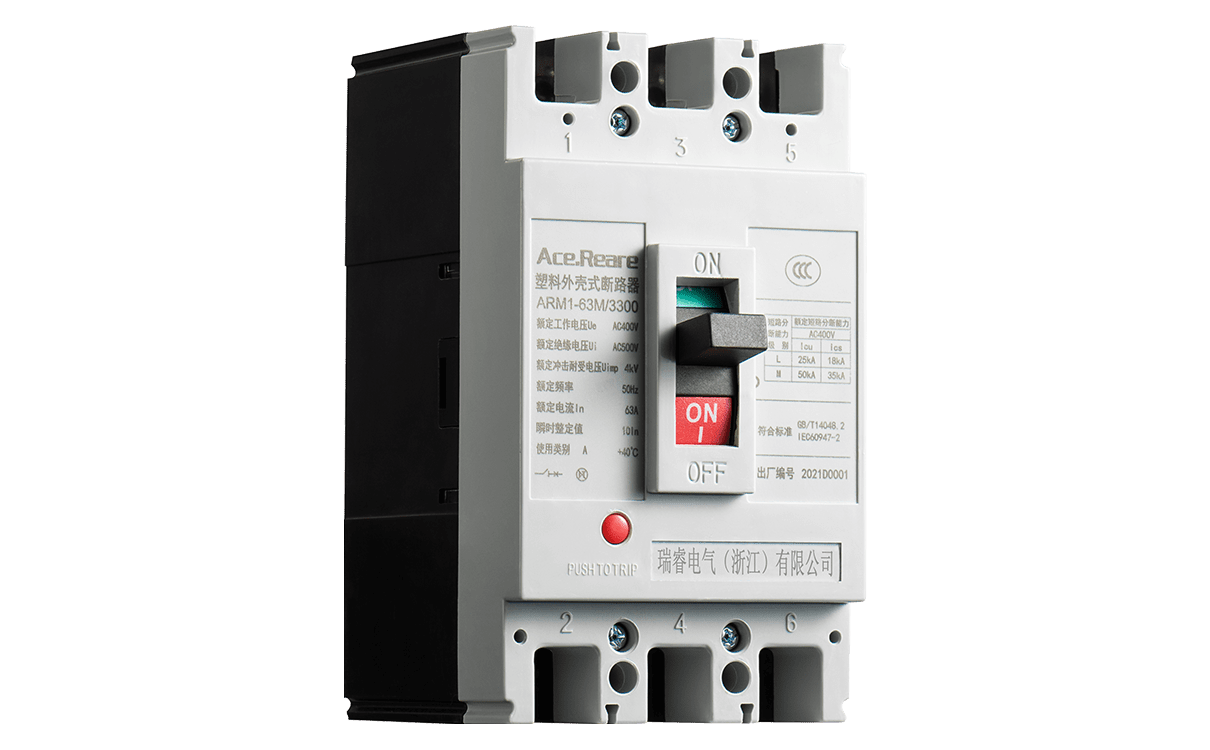
Date | 2022-09-27 13:48:58
Today's main introduction to the real line of the molded case circuit breaker and the next line related content, the following and together to understand.
The wires indicate that the power supply is connected to the end of the circuit breaker cover marked LINE or 1, 3, 5, 7, and that the moulded case circuit breaker handle is located on "ON" ("open"). The load is connected to the end of the circuit breaker cover marked LOAD or 2, 4, 6, 8 and the moulded case breaker handle is under "OFF" ("minute"). The downward direction is reversed. The power cord is the lever and the load cord is the cord. For most plastic-cased circuit breakers, access is by wire only, not downwards. Universal circuit breakers anything can only be entered by wire. Some sizes can not only be advanced, but can also go down the line.
First, let's understand why you can only enter with the wire and not just the wire.
Structural reasons: For moulded case circuit breakers, this means that the power cable passes through the connection plate - static contact - moving contact - soft connection - protection system - connection plate. Below this is the power supply line - connection plate - protection system - soft connection - moving contact - static contact - connection plate. When the short-circuit current is cut off at the lower line, the majority of the arc enters the extinction chamber, but a portion of the charged glass gas moves to the moving contact connection section, where an upper gap short circuit may occur if one phase of the glass gas comes into contact with an adjacent charge body. On the other hand, the circuit breaker, even if it succeeds in cutting off the short-circuit current, is still down the line, so that the protection system, the soft connection and the common spindle are always at supply voltage and the insulated parts deteriorate, so that accidents such as upper, upper and lower soft power may occur.
Reasons for recovery voltage: The recovery voltage is the voltage added between the circuit breaker cutting off the short circuit and the static contact. The arc becomes longer and enters the extinction chamber for cooling, the arc resistance and arc voltage increases and the arc may go out when the arc voltage is greater than the recovery voltage. Recovery voltages are divided into steady-state recovery voltages and temporary recovery voltages. There are two important parameters for the transient recovery voltage. That is, the greater the vibration frequency F and the over-vibration factor R, F, R, the higher the rate of increase in voltage between contacts and the more difficult it is to extinguish the arc. Vibration frequency! has a lot to do with the inductance, capacitance and resistance of the circuit. This is because the lower line has one line component, the inductor and the capacitor. Because the resistance is much higher than the true line, it also has a much higher instantaneous recovery voltage, making it very difficult to close the arc and often causing penetration and deadening the arc.

What high current specifications can be both true and down line because of the large open distance of the contact and the large distance between the upper, some isolation and expanded isolation measures are taken to isolate each commercial plastic structure or to form separate small chambers. Solve the problem of the upper liver short circuit and temporary recovery voltage may be larger. Some plastic-case circuit breakers have a lot of leeway in adopting a double break point or short-circuit cut-off function, so that both true and lower lines can be made.
The risk of electric shock can also occur when the connection is reversed (down the line). This is because it is customary to think of the top (ON) of the handle as the power supply and the bottom (OFF) as the load. The circuit breaker is the brake, but if an uninformed person thinks that there is no voltage at the end of the load, he or she will receive an electric shock when touching it.
It is necessary to mention that the wiring of electronic residual current operated circuit breakers (earth leakage circuit breakers) with overload and short circuit protection can only be accessed through the line. This is because the trip coil of the electronic residual current operated circuit breaker is installed on the load side and when entering the input line, the trip coil trips the circuit breaker in case of leakage. Because the static contacts are open, there is no voltage to the moving contacts. If you now change to the lower line, after a leakage action occurs, the circuit breaker has voltage from the original load side (because the lower line load side is the power side) to both the tripping coil and the moving contacts, and the line voltage will burn the coil when there are symptoms such as surge phenomena, thus losing the desired function of the residual current action circuit breaker.